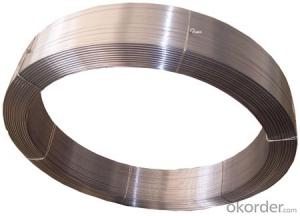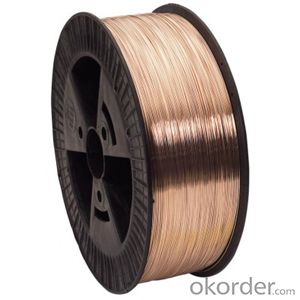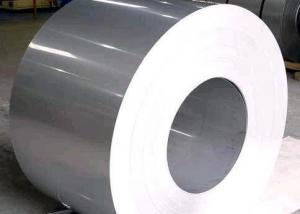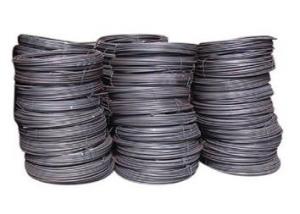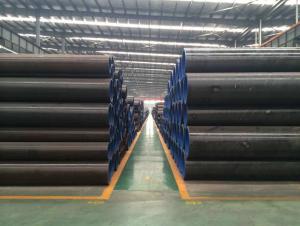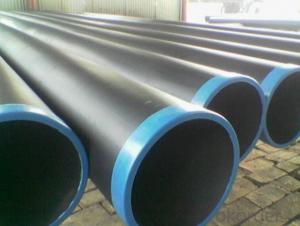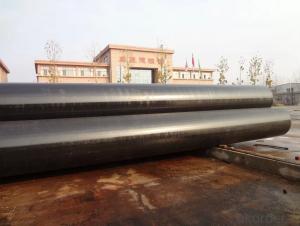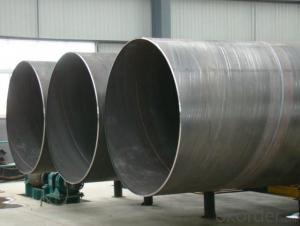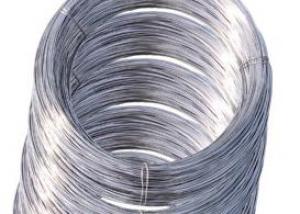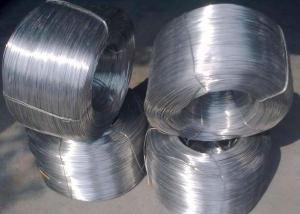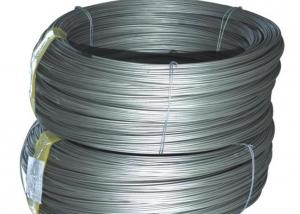Submerged Arc steel Welding Wires EM12K
- Loading Port:
- Qingdao
- Payment Terms:
- TT OR LC
- Min Order Qty:
- 10 m.t.
- Supply Capability:
- 1000 m.t./month
OKorder Service Pledge
OKorder Financial Service
You Might Also Like
Specifications
The submerged arc welding wire series products feature excellent welding and mechanical performances.
Submerged Arc Welding Wire
The products easily removable residue, good seam forming and highly efficient deposiyion.Wire meltingdoes not lead to splash or strong flasing.The sem surface is smooth and welding quality is guaranteed. They facilitate mechanical and automatic welding process. With a wide range of welding parameters, the wires can be used in open fields with strong wind and applied to automobiles, ships, bridges and chemical engineering.
Main Applications:
Applicable to welding of low-carbon steel and some low-alloy steel(such as 16Mn); automatic
submerged arc welding of boilers, pressure vessels, etc.
Chemical compositions of one sample wire(%)
C 0.06 Mn 0.94 Si 0.024 Cr 0.025 Ni 0.015 Cu 0.130 S 0.014 P 0.017
Mechanical Properties of one sample deposited metal
Yield Strength(Mpa) 469
Tensile Stregth(Mpa) 578
Elongation(%) 28
Impact Energy(-20°c) (J) 87
- Q: Is stainless steel wire suitable for automotive exhaust systems?
- Yes, stainless steel wire is suitable for automotive exhaust systems. Stainless steel offers high temperature resistance, corrosion resistance, and durability, making it an ideal choice for exhaust systems that are exposed to extreme heat and harsh environments.
- Q: What are the different shapes of stainless steel wire available?
- Some of the different shapes of stainless steel wire available include round, square, flat, and hexagonal.
- Q: How is the diameter of stainless steel wire measured?
- The diameter of stainless steel wire is typically measured using a micrometer or a caliper, which are tools designed to accurately measure small distances.
- Q: Talking about the difference between mirror stainless steel and brushed stainless steel
- Brushed stainless steel is also a way of processing stainless steel, the surface has a trace of texture,.Mirror stainless steel words and brushed stainless steel characters are stainless steel, but the surface effect is not the same.
- Q: Is stainless steel wire suitable for automotive applications?
- Yes, stainless steel wire is suitable for automotive applications. Stainless steel is a highly durable and corrosion-resistant material, which makes it ideal for automotive use. It can withstand harsh environmental conditions, such as exposure to moisture, chemicals, and road salt, without rusting or deteriorating. Stainless steel wire is commonly used in various automotive components, including springs, cables, exhaust systems, and suspension parts. Its strength, flexibility, and resistance to heat and vibration make it a reliable choice for automotive applications, ensuring long-lasting performance and safety.
- Q: Is brushed stainless steel harmful to the body?
- The substrate is harmful, on the one hand, on the other hand is drawing in scratching the surface of stainless steel, it will make the stainless steel surface burrs, although not too obvious, but in the use of the process there will be some loss of human skin, the body is not good, in addition, the residual stainless steel debris will also on the human body harmful
- Q: What are the different types of stainless steel wire alloys?
- There are several different types of stainless steel wire alloys, including austenitic, ferritic, martensitic, and duplex stainless steels. Each alloy has unique properties and is suitable for different applications.
- Q: Does stainless steel wire require any special maintenance?
- Yes, stainless steel wire typically requires minimal maintenance. It is known for its resistance to corrosion and rust, so regular cleaning with mild soap and water is usually sufficient to keep it in good condition. However, if the wire is exposed to harsh environments or chemicals, it may require additional maintenance or protective coatings to maintain its durability and appearance.
- Q: Stainless steel tapping easily broken wire attack, how to do?
- In tapping stainless steel material to the workpiece, the first will tap after large angle grinding; bottom diameter were bigger;
- Q: How to make clothes hanger for 4 mm 304 stainless steel wire
- The basic alloying elements of stainless steel, as well as nickel, molybdenum, titanium, niobium, copper, nitrogen and so on, to meet the various requirements for the use of stainless steel structure and performance. Stainless steel is easily corroded by chlorine ionBecause, chromium, nickel, chloride is collocated elements, elements will be collocated to form stainless steel corrosion exchange assimilation.turnThe corrosion resistance of stainless steels decreases with the increase of carbon content. Therefore, the carbon content of most stainless steels is low, the maximum is less than 1.2%, and the Wc (carbon content) of some steels
Send your message to us
Submerged Arc steel Welding Wires EM12K
- Loading Port:
- Qingdao
- Payment Terms:
- TT OR LC
- Min Order Qty:
- 10 m.t.
- Supply Capability:
- 1000 m.t./month
OKorder Service Pledge
OKorder Financial Service
Similar products
Hot products
Hot Searches
Related keywords
